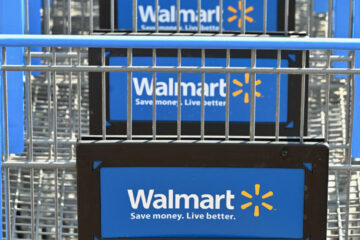The online used-vehicle dealer is on track to drop below $1 billion in market capitalization.
What a difference a year makes.
Carvana, a market and hedge fund darling just over a year ago, is now disavowed by the same investors who seem to be speculating about its possible default and bankruptcy.
The figures are terrible: the stock lost 13% in December. The month of November was brutal as Carvana shares fell by 43%. The stock, which ended 2021 at $231.79, closed the December 6 trading session at $6.71, representing a 97.1% plunge in 2022.
And finally, the market capitalization collapsed and now sits at $1.20 billion. In a nutshell, Carvana (CVNA) – Get Free Report will soon drop below $1 billion in market capitalization. At the rate things are going, it seems like an eventuality that is likely to occur very soon, as the group’s investors and creditors have lost confidence. Assuming it was the same number of shares, the market value would have been $41.45 billion on December 31, 2021.
A Pact
The funds Apollo Global Management and Pacific Investment Management Co (PIMCO) have already signed a pact to join together in negotiations with the company in order to recover their investments, reports Bloomberg News. They are part of a group of funds holding about $4 billion of Carvana’s unsecured debt.
The duration of this pact is three months, which suggests that these funds are convinced that the company, which would revolutionize the way used cars are purchased, will be in default very soon. Carvana bonds are indeed below 50 cents on the dollar. This means that the probability that Carvana does not meet its obligations is very high.
The company, founded in 2012 and based in Arizona, took advantage of favorable conditions to market its new way of buying a car. The group’s car vending machines fared well during the pandemic, a period when consumers wanted to avoid physical contact as much as possible, to limit their exposure to the virus.
The federal government had also flooded consumers with money via stimulus programs. Interest rates were almost at zero, which meant that financing the purchase of a vehicle cost practically nothing.
Added to this, the supply chains of car manufacturers were disrupted, which made the production of new vehicles difficult. Faced with these challenges, consumers turned to the second-hand market as the waiting times for new vehicles were long. Used car prices therefore jumped, making it a good environment for Carvana.
Basically, all the winds were blowing in the right direction for the company.
Run Out of Cash
But everything has completely changed for Carvana now. The company is notably facing the aggressive increase in interest rates by the Federal Reserve in order to fight inflation. Except that this rate hike is a double whammy for Carvana. It increases the cost of credit for consumers wanting to buy a vehicle and it also increases borrowing costs for businesses wanting to invest.
Additionally, high interest rates are bad for Carvana, as the group has a lot of debt and therefore owes millions of dollars in interest related to its debt. The company burned more than $1 billion in cash in the first three quarters of the year.
Some analysts believe that it may face a credit crunch soon.
“We now believe that without a cash infusion, Carvana is likely to run out of cash by the end of 2023,” Bank of America Securities analyst Nat Schindler said on November 30. And “there is no indication yet of a potential cash infusion, for example from the Garcia family (the CEO [Ernie Garcia] and his father the chairman), and it is impossible to predict if and when that would occur.”
As a result, Schindler downgraded Carvana’s stock to “neutral” from “buy.”
Carvana didn’t immediately respond to a request for comment.
The company has between $6 billion and $7 billion in debt net of the cash on the balance sheet, according to FactSet.
But Carvana is not profitable: its adjusted EBITDA margin loss increased by 6.2% in the third quarter. EBITDA refers to earnings before interest, taxes, depreciation and amortization, which helps investors to gauge the financial health of a company.
The company is drastically slashing costs to slow the bleeding: after cutting 2,500 jobs in May, the company recently announced an additional wave of layoffs which will affect 8% of its workforce, or 1,500 employees.
But will it be enough to avert the inevitable?


